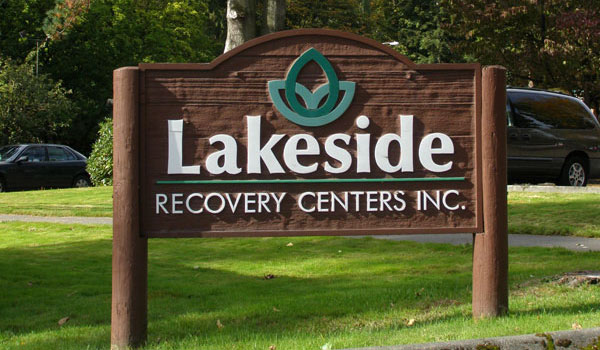Dr. James R. Milam and Katherine Ketcham
“The most important breakthrough in alcoholism since the founding of Alcoholics Anonymous in 1935.” –Ron Fagan, Founder & Director, Cedar Hills Alcoholism Treatment Center
- Alcoholism is our #1 public health problem—and getting worse.
- Alcoholism is a physical addiction—not the symptom of a psychological problem.
- Alcoholism cannot be cured, and recovered alcoholics can never safely return to drinking.
- Nutritional therapy is a vital requirement for full recovery.
Ten million Americans suffer from alcoholism, yet most people still wrongly believe that alcoholism is a psychological or moral problem and that it can be cured by psychotherapy or sheer willpower. Based on groundbreaking scientific research, Under the Influence examines the physical factors that set alcoholics and non-alcoholics apart and suggests a bold, stigma-free way of understanding and treating the alcoholic. What you will learn from this book:
- How to tell if someone you know is an alcoholic
- The progressive stages of alcoholism
- How to get an alcoholic into treatment—and how to chose a treatment program
- Why frequently prescribed drugs can be dangerous—even fatal—for alcoholics .
- How to ensure a lasting recovery

Dr. James R. Milam and Katherine Ketcham
Selected excerpts from the book address many long-held myths about alcoholism and its treatment. Also included are definitions of alcohol treatment terminology.
The Myth and the Reality
Separating myth from reality is not an easy task. Myth is, in fact, reality for many people; to suggest another reality exists is to turn their world upside down. But if the truth about alcoholism is ever to be understood, the myths must be attacked and destroyed. Only facts can destroy myths; and facts are the backbone of this book.
Myth: Alcohol is predominantly a sedative or depressant drug.
Reality: Alcohol’s pharmacological effects change with the amount drunk. In small quantities, alcohol is a stimulant. In large quantities, alcohol acts as a sedative. In all amounts, however, alcohol provides a rich and potent source of calories and energy.
Myth: Alcohol has the same chemical and physiological effect on everyone who drinks.
Reality: Alcohol, like every other food we take into our bodies, affects different people in different ways.
Myth: Alcohol is an addictive drug, and everyone who drinks long and hard enough will become addicted.
Reality: Alcohol is selectively addictive drug; it is addictive for only a minority of its users, namely, alcoholics. Most people can drink occasionally, daily, even heavily, without becoming addicted to alcohol. Others (alcoholics) will become addicted no matter how much they drink.
Myth: Alcohol is harmful and poisonous to the alcoholic.
Reality: Alcohol is a normalizing agent and the best medicine for the pain it creates, giving the alcoholic energy, stimulation, and relief from the pain of withdrawal. Its harmful and poisonous aftereffects are most evident when the alcoholic stops drinking.
Myth: Addiction to alcohol is often psychological.
Reality: Addiction to alcohol is primarily physiological. Alcoholics become addicted because their bodies are physiologically incapable of processing alcohol normally.
Myth: People become alcoholics because they have psychological or emotional problems which they try to relieve by drinking.
Reality: Alcoholics have the same psychological and emotional problems as everyone else before they start drinking. These problems are aggravated, however, by their addiction to alcohol. Alcoholism undermines and weakens the alcoholic’s ability to cope with the normal problems of living. Furthermore, the alcoholic’s emotions become inflamed both when he drinks excessively and when he stops drinking. Thus, when he is drinking, and when he is abstinent, he will feel angry, fearful, and depressed in exaggerated degrees.
Myth: All sorts of social problems—marriage problems, a death in the family, job stress—may cause alcoholism.
Reality: As with psychological and emotional problems, alcoholics experience all the social pressures everyone else does, but their ability to cope is undermined by the disease and the problems get worse.
Myth: When the alcoholic is drinking, he reveals his true personality.
Reality: Alcohol’s effect on the brain causes severe psychological and emotional distortions of the normal personality. Sobriety reveals the alcoholic’s true personality.
Myth: The fact that alcoholics often continue to be depressed, anxious, irritable, and unhappy after they stop drinking is evidence that their disease is caused by psychological problems.
Reality: Alcoholics who continue to be depressed, anxious, irritable, and unhappy after they stop drinking are actually suffering from a phenomenon called “the protracted withdrawal syndrome.” The physical damage caused by years of excessive drinking has not been completely reversed; they are, in fact, still sick and in need of more effective therapy.
Myth: If people would only drink responsibly, they would not become alcoholics.
Reality: Many responsible drinkers become alcoholics. Then, because it is the nature of the disease (not the person), they begin to drink irresponsibly.
Myth: An alcoholic has to want help to be helped.
Reality: Most drinking alcoholics do not want to be helped. They are sick, unable to think rationally, and incapable of giving up alcohol by themselves. Most recovered alcoholics were forced into treatment against their will. Self-motivation usually occurs during treatment, not before.
Myth: Some alcoholics can learn to drink normally and can continue to drink with no ill effects as long as they limit the amount.
Reality: Alcoholics can never safely return to drinking because drinking in any amount will sooner or later reactivate their addiction.
Myth: Psychotherapy can help many alcoholics achieve sobriety through self-understanding.
Reality: Psychotherapy diverts attention from the physical causes of the disease, compounds the alcoholic’s guilt and shame, and aggravates rather than alleviates his problems.
Myth: Craving for alcohol can be offset by eating high-sugar foods.
Reality: Foods with a high sugar content will increase the alcoholic’s depression, irritability, and tension and intensify his desire for a drink to relieve these symptoms.
Myth: If alcoholics eat three balanced meals a day, their nutritional problems will eventually correct themselves.
Reality: Alcoholic’s nutritional needs are only partially met by a balanced diet. They also need vitamin and mineral supplements to correct any deficiencies and to maintain nutritional balances.
Myth: Tranquilizers and sedatives are sometimes useful in treating alcoholics.
Reality: Tranquilizers and sedatives are useful only during the acute withdrawal period. Beyond that, these substitute drugs are destructive and, in many cases, deadly for alcoholics.
The Need for Definitions
“Each of us has his own private view and private meaning attached to the words that are used in the alcohol field.”
Universally accepted definitions do not exist in the alcoholism field. As the researcher quoted above acknowledges, everyone involved in the field has his own private view of the disease. And yet, as this book makes clear, there is a firm basis of research evidence for understanding the disease. The need for precise definitions should be obvious. The following definitions, based on the facts already established in the scientific literature, are central to any attempt to communicate clearly about alcoholism.
Alcoholism: A chronic, primary, hereditary disease which progresses from an early, physiological susceptibility into an addiction characterized by tolerance changes, physiological dependence, and loss of control over drinking. Psychological symptoms are secondary to the physiological disease and not relevant to its onset.
Recovery: A return to normal functioning based on total, continuous abstinence from alcohol and substitute drugs, corrective nutrition, and an accurate understanding of the disease. The word “cure” should not be used because it implies that the alcoholic can engage in normal drinking after his “problem” has been corrected.
Problem Drinker: A person who is not an alcoholic but whose alcohol use creates psychological and social problems for himself and others.
Heavy Drinker: Anyone who drinks frequently or in large amounts. A heavy drinker may be a problem drinker, an alcoholic, or a normal drinker with a high tolerance for alcohol.
Alcoholic: An alcoholic is a person with the disease of alcoholism regardless of whether he is initially a heavy drinker, a problem drinker, or a light or moderate drinker. The alcoholic’s increasing problems and his heavier drinking stem from his addiction and should not be confused with problem drinking or heavy drinking in the non-alcoholic.
Recovered Alcoholic: The alcoholic who maintains continuous, total abstinence from alcohol and substitute drugs and who has returned to a normal life style. The term “reformed alcoholic” implies that the alcoholic has been “bad” and is now being “good”—a reflection of the moralistic approach to alcoholism which has no basis in fact. The term “ex-alcoholic” should not be used either, for it implies a cure rather than a recovery.
Relapse: (“Slip” in A.A. language). Any intake of alcohol or substitute drug by a recovering alcoholic. The taking of a substitute drug, although not usually considered a relapse, seriously interferes with recovery and almost always leads to a return to drinking.
Contact us today at Lakeside-Milam Recovery Centers for FREE Drug & Alcohol evaluations.
Local: (425) 823-3116 or toll free: (800) 231-4303 or email us confidentially help@lakesidemilam.com





